The City & the City
By Gerard Krasnopolski
19/11/2020
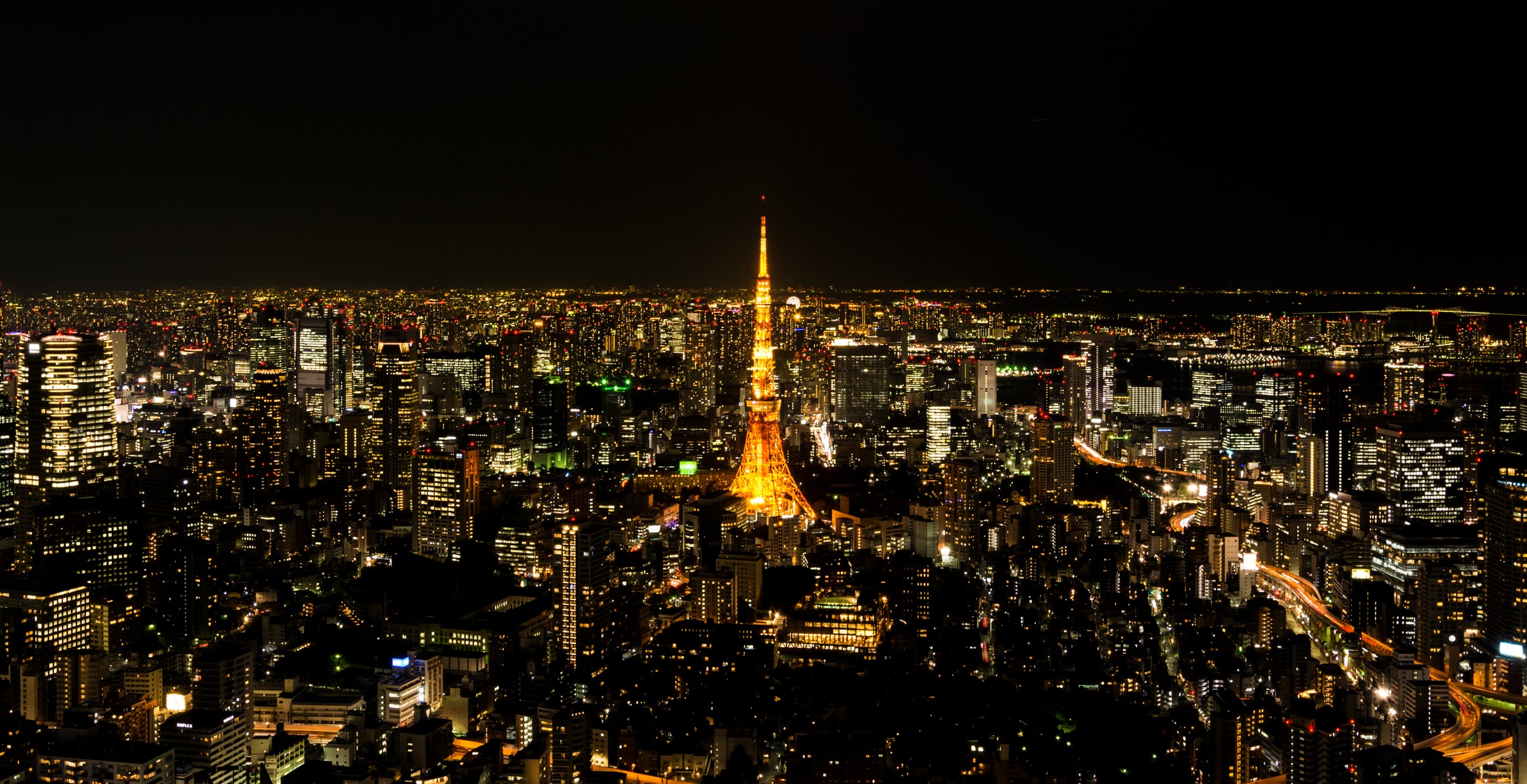
1987. As the film begins Tokyo is destroyed in a nuclear blast – ordered by the Japanese government itself – in an attempt to contain an experimental bioweapon. Fast-forward to a seedy speakeasy in the rebuilt city of Neotokyo in 2019. Nothing much has changed. The same experiments are still being carried out in secret by the government. By accident, motorcycle delinquent Tetsuo is exposed to a radioactive test subject and given psychokinetic abilities. He immediately begins inflicting violence on an apocalyptic scale, but rapidly loses control of his own exponentially-growing power. During a self-coronation in the deserted 2020 Olympic stadium, Tetsuo starts unwittingly pumping his own nerves and sinews into his surroundings, distributing his innards through Neotokyo’s infrastructure until he becomes a Dantesque, teeth-gnashing lost soul trapped inside a living city.
It remains easy to see why Akira was the first anime film to popularize the medium outside of Japan: Shoki Yamashiro’s grandiose Noh-gamelan techno-folk soundscape, the swagger and confidence of the vehicle design, and the iconic setting of Neotokyo itself all hold up to 21st century scrutiny. A 4K rerelease of the film is currently enjoying success worldwide, with fans claiming the film accurately predicts the present state of Japan in 2020. The same Olympics disrupted on-screen by the film’s deuteragonists have been cancelled amid a global pandemic; the prime minister has resigned; the consumer economy has ground to a halt; militaristic elements within the government discuss rearmament as a tool for the moral improvement of a generation spoiled and pampered by the rewards of progress. But Akira’s close-to-the-mark predictions probably have less to do with any prophetic genius on the part of writer-director Katsuhiro Otomo than with a broader Japanese anxiety about cities articulated with particular force through its cinema. In one of his most haunting scenes, a delirious Tetsuo monologues on his need to escape the city while the camera pans slowly upward from the ground, extending the skyline further and further into the distance, simulating Tetsuo’s attempt to see beyond the urban horizon. But there is nothing to be seen; there is no natural world left to escape to. The city is everywhere.
This distinctively apocalyptic Japanese interpretation of the modern urban experience has a long genealogy. The Japanese have had plenty of time to reflect on and interpret the psychological effects of urbanization; by 1770, Tokyo (then Edo) was probably the largest city in the world with about 1.1 million inhabitants, and the Floating World of ukiyo-e woodblock painting that developed in the 1800s depended on a thriving urban culture. Katsushika Oi – daughter of Hokusai – was painting haunting city noirs decades before the “opening of Japan” in 1868 that kicked off the rapid industrial development of the Meiji era.
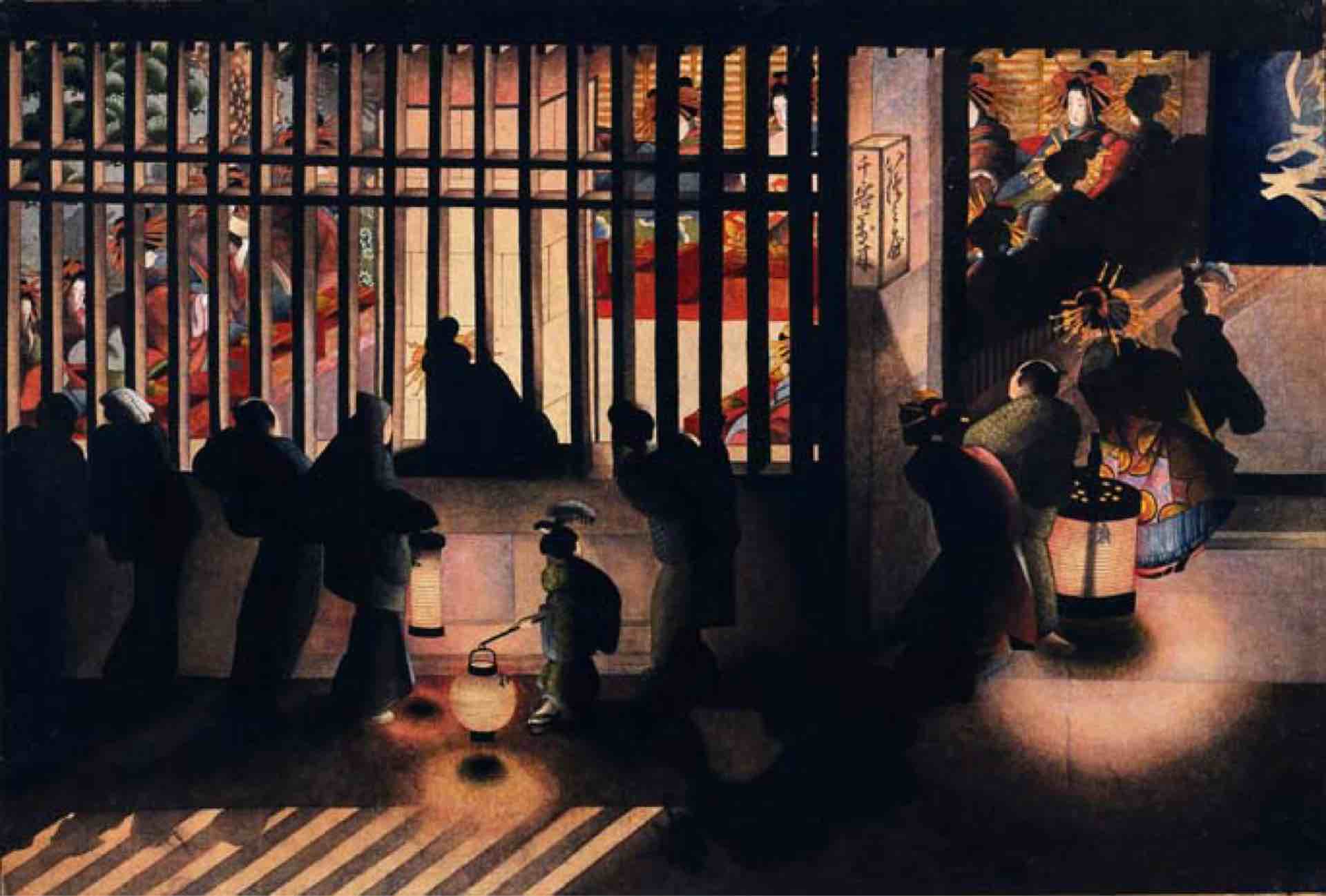
Nightscene in the Yoshiwara by Katsushika Oi
But the rapid modernisation, disaster, and subsequent reconstruction of Japan during the Showa era (1926-1989) incubated a thorough reinterpretation of Japan’s urban spaces. In the span of one lifetime, the Japanese built and lost an empire, endured two nuclear strikes, and re-invented themselves as a thriving market economy; on celluloid, the ephemeral, oneiric figures that populated the Floating World transformed into office workers ruminating on the destructive banality of industrialization. In Akira Kurosawa’s Ikiru (1952), the protagonist shuffles administrative tasks endlessly between Kafkaesque bowels of an indifferent bureaucracy until he learns of his imminent death by cancer. After a pathetic attempt to lose himself in the Tokyo nightlife, he becomes fixated upon reclaiming a patch of disused land and building a children’s playground on it before he dies. Using a non-linear narrative structure, Kurosawa skips the death scene and cuts straight to the protagonist’s funeral, in which colleagues try to recollect and discuss the meaning of the frenzied activity of his final days. Their patchwork of differing opinions gradually changes during flashback scenes that lead up to the protagonist’s death; until in the end, they abandon their cynicism about his motives and rehabilitate him in their memory as a man who managed to make something of his life despite the crushingly mediocre circumstances in which he spent it.
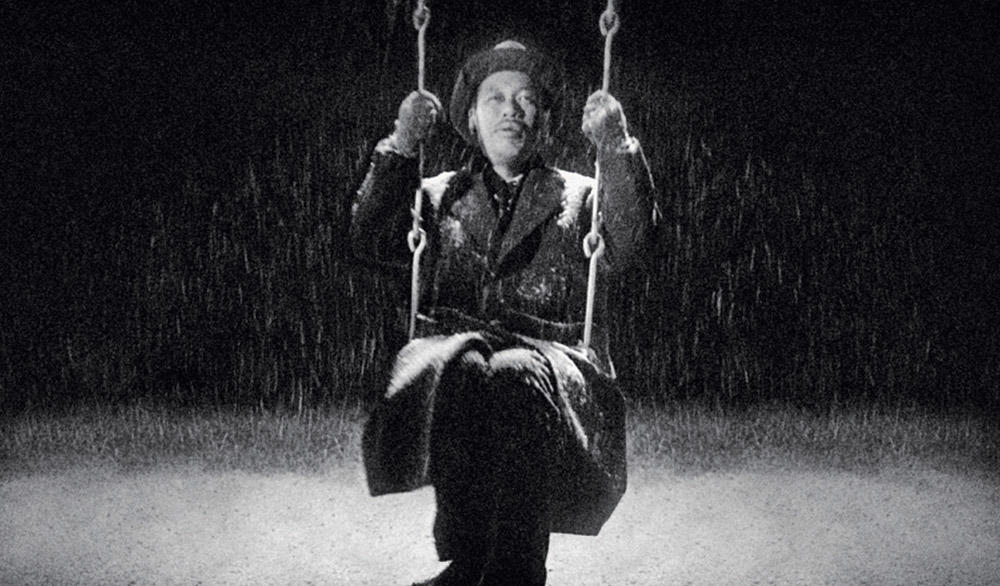
Takashi Shimura in Ikiru
In films like Ikiru, the rapidly-evolving city environments of post-1945 Japan became modern emblems for the perennial theme of mujo (impermanence) that sits at the heart of Japanese art and culture and is most commonly evoked by sakura cherry blossom – beautiful while it blooms, but quickly gone. Hence, during the war, teenage kamikaze pilots drank from cups of sake decorated with shreds of sakura before taking off in Zero fighters wreathed in branches of cherry blossom. The theme gives artists two options: to celebrate life’s beauty, or lament its briefness. Yasujiro Ozu’s seminal Tokyo Story (1953) takes the opposite route to Ikiru, following the slow collapse of a family as young people swept up in city life increasingly drift away from their isolated parents, using the eponymous city as a symbol of rushing time and an overpowering engine of change and separation.
At the same time, directors from abroad began using Japanese cities to frame discussions about the isolation and disappointment intrinsic to modernity more broadly. In 1959, mujo tangled with French existentialism in the winding, hopeless conversations about loneliness, memory, and mass media that filled Alan Resnais’s nouvelle vague love story, Hiroshima Mon Amor (1959). In a memorable scene from Tokyo-Ga (1985), Wim Wenders filmed fellow German director Werner Herzog surveying the billboards and monoliths of the Tokyo skyline, speculating on the need to leave Earth entirely in order to escape the pernicious interlocking influences of citification and commercialization. Sophia Coppola achieved a similar effect in 2003’s Lost in Translation as foreigners traipse in bewilderment through Tokyo, looking for genuine connections.
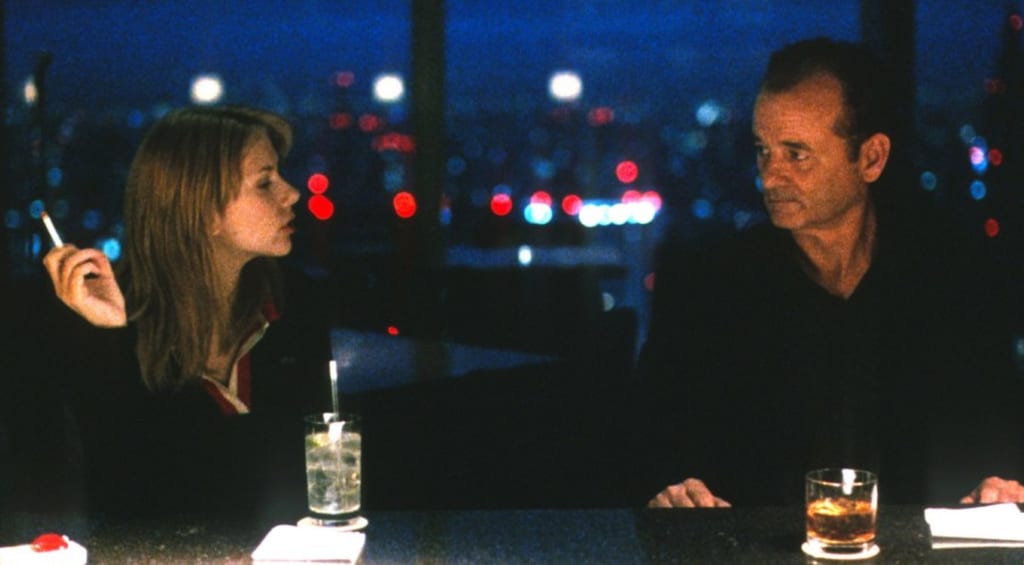
Scarlett Johansson and Bill Murray in Lost in Translation
Made after the economic crash of 1991, the Japan Coppola presents is a far cry from the manic future envisioned when Akira was first released. The preoccupations of Japan’s cinema have changed in tandem with changing social and economic circumstances. The stable, well-paying jobs in core industrial firms that drove productivity and consumption in Japanese cities are now no longer assured. Where most graduates once worked in a single secure, relatively high-income company role for their entire working lifetime, prospects are now less secure. Kore-Eda’s internationally celebrated Shoplifters (2016) drew global attention to the increasing number of city dwellers forced to turn to informal work as opportunities dry up. Globally, Japan has started to develop a reputation for overwork and inefficiency. Recent surveys suggest that Japanese city-dwellers are probably the most sleep-deprived in the world; foreign visitors find themselves wakeful loners on Japanese trains totally occupied by sleeping commuters exhausted by unproductive 12-hour days. The women who used to run the households of such employees are becoming increasingly less eager and able to do so, seeking their own careers even as an “iron plate” of gender inequality limits opportunities for career development.
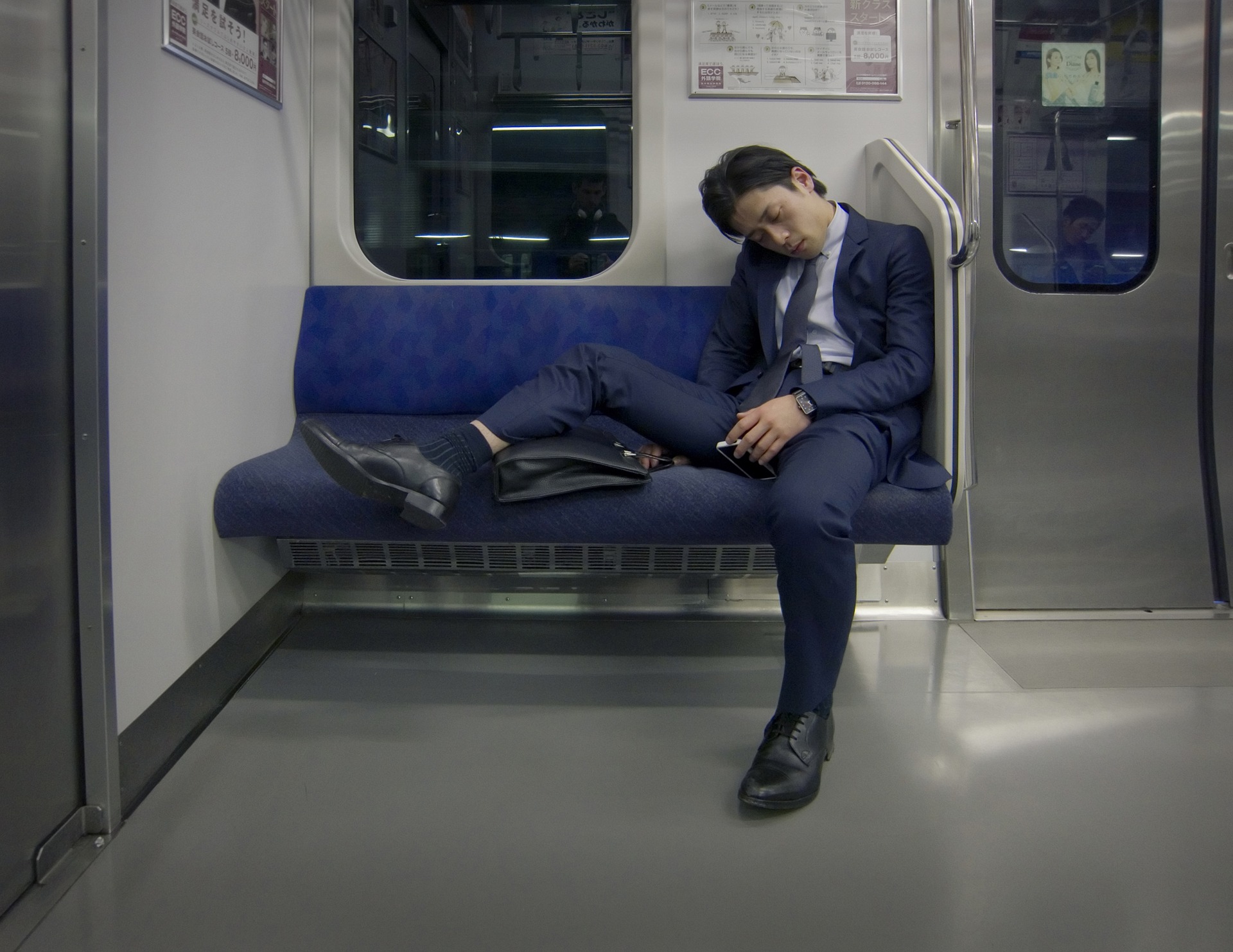
Picture Credit: tokyoform
Where the growth of the consumer economy once fuelled cinematic speculation that Japanese cities would destroy themselves in the febrile pursuit of growth, filmmakers are now preoccupied by stories in which characters try to renew post-industrial and abandoned landscapes. Three of Japan’s most recent domestic box office record setters – Princess Mononoke (1997), Spirited Away (2001), and Your Name (2016) – are primarily set within areas of Japan that were left behind during Showa, and all three use such settings as springboards for exploring the relationship between country and city. Princess Mononoke pits a fizzing cast of lepers, orphans, sex workers, displaced minorities, and arms dealers together in a single city state and forces its audience to examine the environmental and political consequences of their way of life as the city state’s mining and manufacturing brings it into conflict with vengeful spirits and samurai overlords. Spirited Away drops its 11-year-old protagonist into a theme park abandoned after the 1991 economic crash and shows her negotiating a place for herself in a community of bottom-line-minded ghosts grown greedy from the era of growth. Your Name centres around a girl born in a left-behind rural town who is desperate to escape to the capital, only to find that the town in which she was born plays host to mysteries of cosmic significance.
This cinematic focus reflects real government policies. The Japanese government currently spends a significant amount of money subsidizing internal travel, trying to get city dwellers to see the rest of their own country. A long-running government programme has been set up to lure urbanites to fill the 8 million empty houses scattered across the Japanese countryside: if residents stay a certain number of years in the rural areas they move to, the house becomes theirs for next to nothing. Furthermore, Japanese cities are trying to transform themselves into more sustainable rural-urban hybrid environments; Tokyo hosted one of the world’s first urban agriculture summits in 2019. Associated initiatives extend from farms constructed upon artificial islands in Tokyo Bay to extensive remote-controlled underground facilities, as well as more conventional rooftop and greenhouse gardens.
The critic Taihei Imamura once claimed that the essential characteristic of Japanese cinema was its deliberate avoidance of events, characters, and dramatic structure. The goal of golden-age directors Yasujiro Ozu and Kenji Mizoguchi, Imamura claimed, was to facilitate “an escape to nature” through haiku-like visual poetry as audiences sought to escape the frenetic urban rush associated with Japan’s rapid development into an industrial superpower. In the 21st century, the focus of Japanese cinema is shifting as memories of Showa-era growth and dominance fade. If Japanese cinema is to retain its reputation in a field increasingly crowded with quality films from Korea, India, and China as well as Hollywood, it must find new sources of growth and inspiration amidst massive environmental, demographic, and geopolitical change. Makoto Shinkai’s Tenki No Ko from 2019 closes with a vision of Tokyo half-submerged by an endless bout of supernatural rainfall that initially looks like an ecological disaster. Yet rather than drowning in its own incompetence or self-importance, the city adapts to its new surroundings and finds a way to thrive even as streets become canals and rhythms of life dramatically change – a visual metaphor that may yet prove prescient for Japanese cinema and Japanese cities in decades to come.
